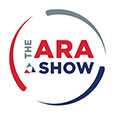At RiteChoice Ducting, we work with you to determine your project goals and manufacture fully customized ducts built to your specifications. Below are six factors to consider when selecting flexible ducting for your application. Contact our team today to learn more about our capabilities or request a pricing quote.
Material
Material is one of the most important aspects to consider when choosing ventilation. Your location, application, pressure, and air temperature are all factors that will determine what fabric and weight to utilize. We carry standard, blockout, insulated, and high-temperature fabric for a variety of industries. Ask us about color options if your project calls for unique customization.
Diameter
The diameter of flexible ducting affects the amount of airflow and velocity and is crucial in how well your ventilation system operates. Duct diameter is the measurement of the end cuff from one side section to the other outside section. A diameter sized correctly results in balanced airflow, while oversizing or undersizing could result in poor efficiency and restricted airflow. Also, be aware of the diameter of your connection point for a secure hold.
Length
The length of your flexible duct will depend on the requirements of your application. If your ducts remain stationary, carefully measure the source of your air supply to the output location. Keep in mind, our flexible ducts can compress to shorter lengths and are sized by the greatest possible distance that they can be stretched.
Pitch
The distance between each loop of steel wire that makes up the internal reinforcement will influence the strength and rigidity of your duct. We offer a variety of pitches depending on your selection of material. The tighter the pitch, the greater strength. More spread-out pitches will offer greater mobility. To protect duct fabric from tears, we offer extruded wear strips in multiple colors.
Bonding
While most of our ducts come with a welded bond, we also have sewn or stitched options available upon request. A welded bond creates a nearly invisible seal between the two layers of fabric and improves the overall performance of your duct. An added benefit of welding is that the material is not perforated and eliminates the need for threading. Sewn construction offers versatility, as this method can be used with a variety of fabrics.
Finishing
Each of our end finishes are manufactured to make securing your ducts as effective as possible. Connect multiple ducts together or easily attach to spot coolers, dehumidifiers, utility blowers, and more with our machine end soft cuffs, hoop cuffs, belt cuffs, pin-lock cuffs, and worm-gear cuffs.





